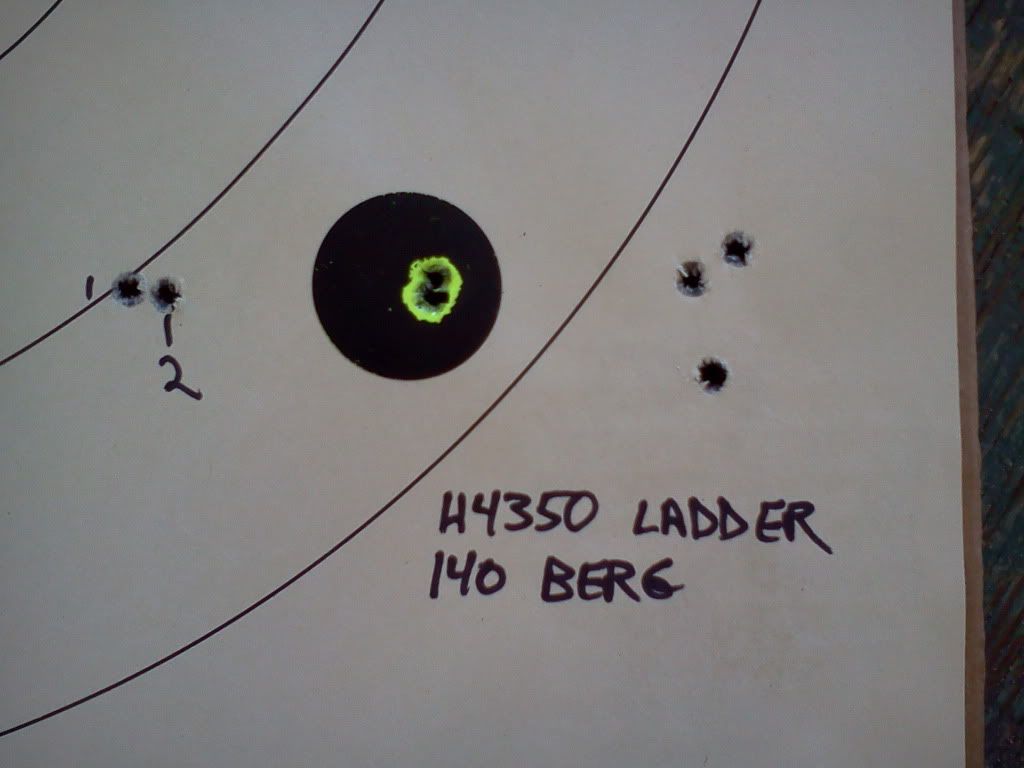Re: OCW tests out of my hunting rifle. 30-06
<div class="ubbcode-block"><div class="ubbcode-header">Originally Posted By: OldTex</div><div class="ubbcode-body"><div class="ubbcode-block"><div class="ubbcode-header">Originally Posted By: thespecialist</div><div class="ubbcode-body">OldTex, the OCW and Audette Ladder are totally different animals. Just for reference, here are the instructions for a proper OCW test straight from Dan Newberry.
http://optimalchargeweight.embarqspace.com/#/ocw-instructions/4529817134 </div></div>
After reading this, it seems to confirm that the OCW and ladder are one and the same animal. They both look for 'nodes' where the change in powder has the smallest effect on POI. The only real difference is in how many shots are taken for each charge weight. Changing the sequence of shots and the use of multiple POA don't change the underlying test that is being run.
What I was missing was the rather convoluted measuring method to determine which groups formed a node with the OCW. If you ran the ladder test with 3 shots at each weight, you'd get the same thing. Not that this is any big deal, I just couldn't figure why all the different POA. I've been known to run the ladder test multiple times just to eliminate shooter-error on any particular shot from the equation.
<div class="ubbcode-block"><div class="ubbcode-header">Quote:</div><div class="ubbcode-body">14. Triangulate the groups. This means to connect all three shots in a triangular form, and determine the center of the group, and plot that point on the target. Measure this point's distance and direction from the bullseye, and record the information somewhere on the target. Do this for all of the targets. If you have a called flyer, you should discount that shot, or replace it in the group if you have an additional round loaded with that charge.
15. You will now look for the three groups which come the closest to hitting the same POI (point of impact) on the targets. The trend of the groups should be obvious, normally going from low and favoring one side, to high and favoring the other side. But along the progression, there should be a string of at least three groups that all hit the target in the same relative point.</div></div> </div></div>
The problem with OCW is too many people are looking to make it more complicated than it really is. The main difference between ladder and OCW is the size of the incremental increase of charge weight. Most ladder users will increase in weights that often skip over critical details that the more refined OCW method gives.
Correctly shooting an OCW at 100 yards, each weight at it's own point of aim, in round robbin, gives more reliable feedback in that, for all intents and purposes, it ignores most conditional influences found in a longer range ladder test. If you think wind only blows a bullet sideways you are nuts. OCW gives more data points that are easier to visualize than a ladder test does. A properly done OCW, that can be interpreted correctly, is better info than three seperate ladder tests done at different times. An OCW shows multiple scatter nodes as well as multiple accuracy nodes, and in a way that is more scientific. You see a scatter node begin, open up, then fade. You then see an accuracy node form, you see how wide it is, and then you see it end when the next scatter node opens up. OCW is a perfect way to actually see the barrel harmonics.
An argument often made is that 100 yard testing is not as "good" as longer range testing. Okay, I'll just whip out a picture of the 1/4 MOA at 500 yards that my last OCW load work up will do. My humble experience is that a good OCW at 100 yards is a good OCW at long range too.
Another problem with OCW is that people can't understand from what/where it came. It's for practical development of practical loads for practical rifles.... it gives a reliable load that performs consistantly over time.
It's not for group shooters who chew their nails over a group that's .0185" bigger than last week's group; it's not for the guy who seeks self punishment with POI shifts between June and February; and it's not for speed sluts who believe flat primers are cool and the fastest bullet is the best bullet.
I take the testing process a step further than Dan does, because that is what works for me. From there on, after I find my OCW, I spend all of my worry on such things as keeping a good rifle good, TIR runout.....and having enough bullets/powder/primers on hand.

 </a>
</a>





